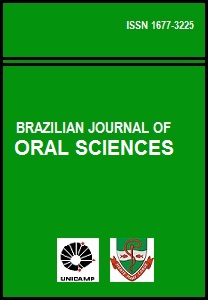Abstract
Aim: To describe the prevalence of dental caries and fluorosis in schoolchildren from two different towns in São Paulo State, Brazil, 2007 - town A (water fluoridation since 1971) and town B (water fluoridation since 1997) - and to compare current prevalence rates with previous surveys, in town A, for dental caries (1971-2005) and for dental fluorosis (1991-2001), and in town B, for dental caries and dental fluorosis (1991-2004). Methods: The sample consisted of 724 schoolchildren aged 12 years from public and private schools (town A) and 197 schoolchildren from public schools (town B). The schoolchildren were examined under natural light by a dentist, using CPI probes and oral mirrors. The mean number of decayed, missing and filled permanent teeth (DMFT), and Significant Caries (SiC) Index were determined for dental caries and the Thylstrup and Fejerskov index (T-F) for fluorosis. Results: The DMFT was 0.85 and 1.02; SiC index was 2.52 and 2.83 in towns A and B, respectively. Fluorosis prevalence was 29.4% (town A) and 25.4% (town B). In both towns, a significant dental caries reduction has been observed. Concerning fluorosis prevalence, an increase of 44.1% was noted in town A and 1170% in town B. Conclusions: Results show continuous decrease in dental caries experience in both towns. Regarding fluorosis prevalence, stabilization trends were observed in town A. In town B, however, a constant increase was noted.The Brazilian Journal of Oral Sciences uses the Creative Commons license (CC), thus preserving the integrity of the articles in an open access environment.
Downloads
Download data is not yet available.

